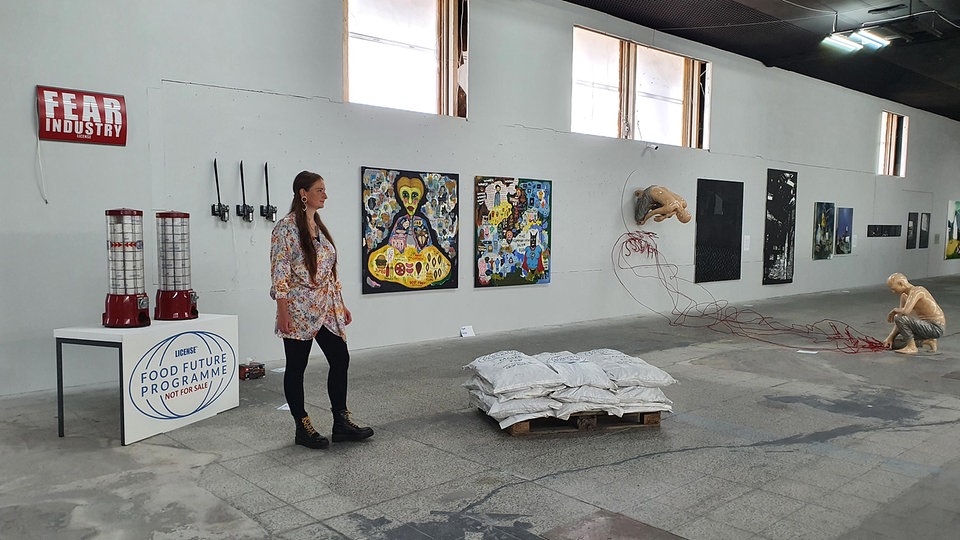You don’t always see that at first glance. This is also the case with the installation by Bernd Hennig from Birkenfeld near Pforzheim: “He stretched a red mesh between the two figures, which resulted in the word love on one side and the word hate on the other,” says Lisa Uhlig, curator of the ostrale “If we look closely, we realize that it’s the same person. This means that we have to or can make these decisions ourselves and these emotions are naturally attached to ourselves.”
Lots of free space in the exhibition
What is striking about this year’s Ostrale is that the curators have given the works of art and thus also the visitors more space. That means fewer objects and, above all, fewer video installations. They otherwise made up a large part of the exhibits and led to the criticized sensory overload. Now it’s just a pleasure to take time for the animation of the Canadian Alisi Telengut, who deals with her family history, the shamanic rituals in Siberia and Mongolia.
Next door, three small brush robots are scurrying across the hall floor, making strange, plaintive noises. Fascinated, you stop in front of them and wonder what they have to do with the jagged plasterboard wall. The Polish artist shows a symbolically cut happiness diagram of the European population, says curator Lisa Uhlig: “And the accident was broken out and the robots have to clean it up.”
The only object dominating the space is the book bunker by the young Hungarian Judit Lilla Molnár, composed of open school books, stacked on top of each other like a house of cards. She deals with the question of which acquisition of knowledge is actually important for our lives.
Special motto for the Biennale in Dresden
“Our society has never been so torn as it is today, and at the same time the need for community and solidarity is greater than ever before,” the exhibition organizers describe the current challenges, with the artists confronting the realities individually. In this way, contemporary art becomes a mirror of society, says curator Lisa Uhlig.
The flicker images created by Michael Wesely using a special technique, which were the inspiration for this year’s motto “kammer_flimmern”, are an example of this: “Ventric fibrillation describes the medical condition that requires acute action. But we don’t just see this dangerous one state in which our society finds itself, but also isolates the chamber and the flickering: the chambers are closed spaces with their own rules, shelters that we felt very strongly through the positioning of the works.”
At the end, Hungarian artist Klára Orosz invites visitors to play with her pile of red dice. Ironically, it’s called “3D Pixel”. Until the end of the exhibition, no stone will be left unturned in the Robotron canteen in Dresden.
Further information
The Ostrale O23 “kammer_flimmern” can be seen in Dresden until October 1st.
Address:
The Robotron Canteen
Zinzendorfstrasse 5 / corner of Lingnerallee
01069 Dresden
Opening hours:
Wednesday to Sunday, from 11 a.m. to 7 p.m
Prices:
Normal price: 15 euros
Reduced: 10 euros
Children under 12 years: free
Multiple group rates
Guides:
Friday to Sunday, 3 p.m. each day
and by individual agreement
A guided tour costs an additional 5 euros.
Editorial processing: Thilo Sauer
